
Sorption Science Webinars/Workshops Directory
To keep up to date with our upcoming events please visit: https://www.surfacemeasurementsystems.com/learning-center/webinars/
| Responsible | Daniel Villalobos |
|---|---|
| Last Update | 24/04/2025 |
| Completion Time | 1 day 4 hours 1 minute |
| Members | 240 |
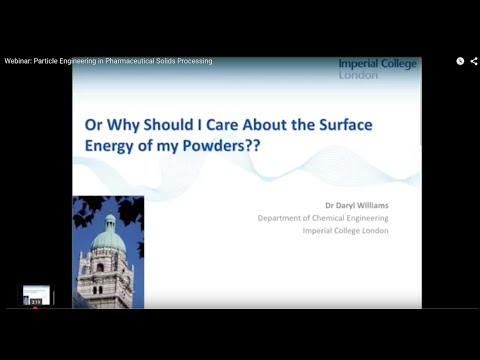
Webinar title: Particle Engineering in Pharmaceutical Solids Processing: Surface Energy Considerations
Topic: This webinar presented by Dr Daryl Williams from Imperial College London reviews the surface energy and surface energy heterogeneity of crystalline solids, methods for the measurement of surface energy, effects of milling on powder surface energy, adhesion and cohesion on powder mixtures, crystal habits and surface energy, surface energy and powder granulation processes.
For more information visit our website:
www.surfacemeasurementsystems.com
LinkedIn: https://www.linkedin.com/company/surface-measurement-systems
Twitter: https://twitter.com/surfacemsystems
General Applications
View all
In the fight against climate change, DAC has emerged as a promising solution to remove carbon dioxide directly from the atmosphere, offering a sustainable pathway to mitigate greenhouse gas emissions. This webinar brings together leading experts in the field who explore the latest advancements in DAC technology, with a particular focus on the role of adsorption processes. Researchers from Imperial College London discuss recent findings and key technological considerations for advancing Direct Air Capture (DAC) through adsorption. This will be followed by a presentation from Dr. Paul Iacomi, Product Manager of DVS Carbon, who provides detailed practical case studies showcasing DAC in action using advanced sorption instrumentation.
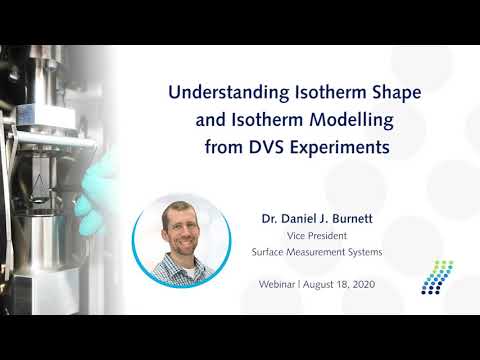
Dynamic Vapor Sorption (DVS) instruments are commonly used to measure sorption isotherms on a diverse array of materials, including powders, fibers, films, particulates, and other solid surfaces. These isotherms can be obtained with various gases and vapors over a wide range of temperatures. Isotherm size, shape and hysteresis can elucidate mechanistic information about vapor/gas-solid interactions. Further, by applying the correct isotherm models, it is possible to determine additional material properties, such as surface areas, monolayer capacities, micro- and meso-porosity, and sorption enthalpies. This educational and informational webinar focuses on the interpretation of isotherm attributes and the application of various surface and bulk isotherm models.
Presenter: Dr. Daniel J. Burnett
Host: Brad McGroarty
Website: https://www.surfacemeasurementsystems.com/learning-center/webinars/
Email: science@surfacemeasurementsystems.com
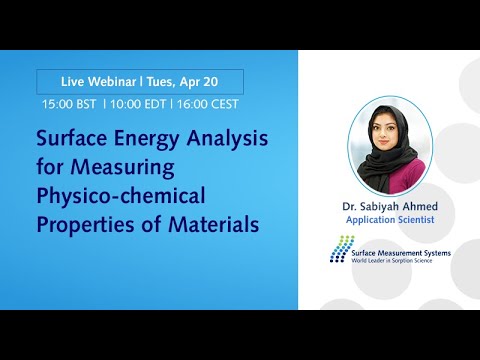
This webinar covers an in-depth introduction to the Inverse Gas Chromatography – Surface Energy Analyser (iGC-SEA) technique and the concept of surface energy. It explores the versatility of the iGC-SEA technique and how it can be used in the study of pharmaceuticals, polymers, carbon materials and fibres. The case studies presented highlight the use of the system to measure BET specific surface area, surface energy and surface heterogeneity. Studies also demonstrate the effects of changing conditions of temperature and humidity on materials.
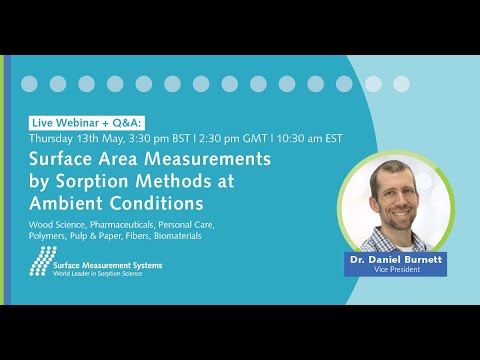
Traditional BET surface area measurements are typically performed by volumetric, gas sorption techniques. These methods require exposing the material of interest to very low pressures (10-3 Torr and below) and cryogenic temperatures (77K). These conditions can have deleterious affects on many classes of materials; including pharmaceuticals, foods, cellulose-based samples, and natural ingredients. In particular, low pressures and temperatures can cause structure collapse or phase changes on fragile solids. Flow-based sorption techniques, like Dynamic Vapor Sorption (DVS) and Inverse Gas Chromatography (IGC) can be performed at atmospheric pressure and room temperature. These techniques can be used to determine BET surface areas at industrially relevant and environmental storage conditions. In addition, these techniques can be performed over a wide range of relative humidity conditions, which allow surface characterization and determination of surface areas at ‘real-world’ conditions.
This educational seminar overviews the BET surface area principle by DVS and IGC. Also, it compares results with volumetric measurements and highlight the application of DVS and IGC surface area measurements on a range of materials.
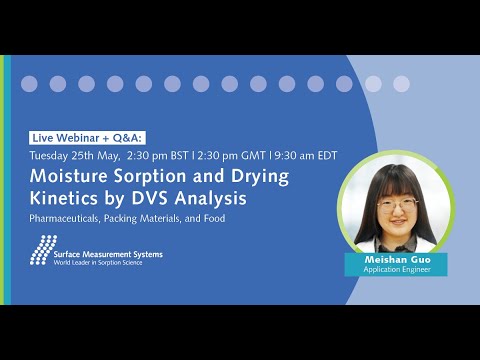
Almost all production stages involve moisture sorption and drying processes, which would affect the physical and chemical stability of the materials. For food materials, the moisture sorption properties are critical for shelf-life stability. This is especially true for materials like biscuits or crackers which are vulnerable to either temperature or humidity shocks. This study uses the Dynamic Vapour Sorption (DVS) technique to focus on the influence of sample size and morphology on the moisture sorption behavior of food materials including biscuits and crackers.